What is the most basic Chinese dish?
When we talk about Chinese cuisine, a vast array of dishes comes to mind, filled with rich flavors and diverse ingredients. However, if you’re looking for the most basic Chinese dish that embodies simplicity and comfort, you can’t overlook rice. Throughout China, rice is a staple food, making it the cornerstone of countless meals. Understanding rice and the ways it can be presented will deepen your appreciation for Chinese culinary traditions.
Rice has been a fundamental food source in China for thousands of years. Different regions produce various types of rice, such as long-grain rice, sticky rice, and jasmine rice. The method of cooking and the way rice is served can vary greatly based on cultural traditions and preferences.
Here are some of the most common types of rice dishes in China:
- Steamed Rice: This is the most straightforward way to enjoy rice. Simple, fluffy, and served as a side dish, it pairs beautifully with many Chinese entrees.
- Fried Rice: Often made with leftover rice, this dish includes vegetables, eggs, and sometimes meat, all stir-fried together. It’s a delicious and economical way to use up ingredients.
- Rice Congee: A warm rice porridge typically enjoyed for breakfast or as comfort food. It can be sweet or savory and topped with a variety of ingredients.
- Sticky Rice: Common in dim sum, this glutinous rice is often steamed in bamboo leaves, giving it a unique flavor and chewy texture.
While rice is the most essential and basic dish, it is often served alongside other key components in a meal. This combination makes the dining experience more fulfilling. Here are some traditional items commonly paired with rice in Chinese cooking:
- Stir-Fried Vegetables: Fresh vegetables sautéed with soy sauce deliver essential nutrients and bright flavors.
- Meat Dishes: Pork, chicken, and beef cooked in rich sauces often accompany rice, creating a balanced meal.
- Tofu: A popular protein source, tofu can be stir-fried or stewed, catering to vegetarian and vegan preferences.
Understanding how to enjoy rice as part of a meal can enhance your eating experience. In traditional Chinese dining, it is customary to share dishes. This communal style of eating encourages you to sample various flavors and textures, all of which revolve around that basic bed of rice.
The methods for preparing rice can also vary from region to region. In Southern China, for instance, rice is often steamed to fluffy perfection. In contrast, in Northern China, wheat might be more prevalent, but rice still holds importance. Here’s a quick look at rice’s preparation methods by region:
| Region | Rice Preparation Method |
|---|---|
| South China | Steamed Rice |
| North China | Often less rice; maybe noodle-based dishes |
| Sichuan | Spicy Fried Rice |
| Eastern China | Sticky Rice Desserts |
Learning to cook rice can be simpler than you might think. Here’s a basic method you can follow:
- Measure out the rice. Generally, use one cup of rice for every two cups of water.
- Rinse the rice under cold water until the water runs clear to remove excess starch.
- Combine the rice and water in a pot. Bring it to a boil over high heat.
- Once boiling, reduce the heat to low, cover, and let simmer for about 18-20 minutes, or until all the water is absorbed.
- Remove from heat and let it sit, covered, for another 5-10 minutes before fluffing with a fork.
For more insights into Chinese cuisine, consider visiting Chinese Cooking Demystified or explore traditional recipes and cooking tips at China Sichuan Food.
The basic rice dish forms the bedrock of many Chinese meals, making it not only the most basic, but also the most versatile ingredient in the cuisine. As you delve deeper into the world of Chinese dining, you’ll discover that rice is more than just food; it’s a cultural symbol connecting millions of people across generations.
The cultural significance of rice in Chinese cuisine
Rice holds a revered place in Chinese cuisine and culture, symbolizing nourishment, prosperity, and a connection to tradition. Given its versatility and availability, it plays a vital role not just in meals but also in cultural practices and festivals across China.
In many households, rice is a daily staple, serving as the centerpiece of meals. It accompanies a variety of dishes, from stir-fries to soups, and showcases its adaptability to numerous flavors and cooking techniques. Various types of rice, such as jasmine, glutinous, and brown rice, contribute to the rich diversity of Chinese culinary practices.
Historical Context
The cultivation of rice in China dates back thousands of years, with archeological evidence suggesting that rice farming began around 7000 B.C. in the Yangtze River Valley. Over the centuries, rice has evolved from being merely a food source to a symbol of cultural identity and social unity. It continues to play a significant role in everyday life and special occasions.
Symbolism in Festivals and Celebrations
Rice is indispensable in Chinese celebrations and rituals. For instance:
- Chinese New Year: During this time, dishes made with rice are served to symbolize wealth and prosperity for the coming year.
- Wedding Ceremonies: In traditional weddings, couples are often presented with rice as a gift, representing fertility and abundance.
- Harvest Festivals: Celebrating the rice harvest is a common practice, filled with festivals that display gratitude for the food source.
Regional Variations
Different regions in China utilize rice in unique ways, influenced by local cultures, tastes, and cooking techniques. Here’s a closer look:
| Region | Popular Rice Dishes | Unique Features |
|---|---|---|
| Southern China | Congee, Fried Rice | Rice is often a primary starch; meals are usually rice-heavy. |
| Northern China | Steamed Rice, Rice Noodles | Wheat-based foods are more common, but rice plays a complementary role. |
| Western China | Yak Rice | Influenced by Tibetan culture, often featuring robust flavors. |
Daily Life and Social Importance
Beyond festivities, rice is entwined in the daily lives of Chinese people. It represents a meal that brings families together, fostering a sense of community and belonging. Whether it’s a simple bowl of rice accompanying a hearty stir-fry or a more elaborate dish on special occasions, rice is central to bonding and sharing.
Moreover, rice cultivation is intricately linked to rural life in China. Farmers work tirelessly to grow and harvest rice, highlighting the importance of this grain to livelihood and sustenance. The agricultural techniques used in rice cultivation, such as flooded fields and crop rotation, have been perfected over generations, showcasing the bond between the people and the land.
Global Impact
The significance of rice in Chinese cuisine has transcended borders. As Chinese restaurants and dishes proliferate worldwide, the use of rice also shines. It introduces various cultures to the rich flavors and textures of Chinese cooking. From sushi to fried rice, dishes incorporating rice have become beloved staples in many countries.
In recognizing the cultural significance of rice, you appreciate not only its role in nourishment but also its influence on traditions, festivals, and social values. Understanding these connections adds depth to the experience of enjoying Chinese cuisine.
The impact of rice is unmistakable, revealing how a simple grain can symbolize abundance, culture, and community in Chinese society. For more information on the role of rice in Chinese culinary traditions, feel free to visit The Spruce Eats or China Highlights.
Variations of noodles across different regions of China
Noodles are a cultural symbol in China, with countless variations that reflect the diverse flavors, ingredients, and cooking techniques of different regions. From the thick, chewy noodles of the north to the thin, delicate offerings of the south, noodles in China are more than just a staple; they tell the story of its people and traditions.
Regional Variations of Noodles
Here’s a look at some regional variations of noodles across China:
- Eastern China: Known for its fine, delicate noodles, eastern regions like Jiangsu and Zhejiang focus on soft textures. A popular noodle type here is Noodle Soup, often served in a broth with seafood.
- Western China: The dishes here tend to be heartier and spicier. For example, Lanzhou Beef Noodle is famous for its hand-pulled noodles, which have a chewy texture and are served in a spicy broth.
- Southern China: With an emphasis on lighter dishes, you’ll find rice noodles and steamed options here. Fried Rice Noodles are common and are often paired with fresh vegetables and proteins.
- North China: Thick and hearty noodles characterize this region, as seen in dishes like Chinese Egg Noodle. These are often served with rich meat sauces or in stir-fries.
Popular Types of Noodles
Across these regions, different types of noodles are enjoyed:
| No. Type of Noodle | Description | Common Regions | |
|---|---|---|---|
| 1 | Wheat Noodles | These are made from wheat flour and water, typically found in the north. | Shanxi, Beijing |
| 2 | Rice Noodles | Thin and flexible, made from rice, prevalent in southern China. | Guangdong, Guangxi |
| 3 | Glass Noodles | Also known as mung bean noodles, these are transparent when cooked. | Popular in various regions |
| 4 | Egg Noodles | Made with egg and wheat flour, they are rich and tasty. | Popular across China |
| 5 | Hand-Pulled Noodles | Cultural specialty in Northern China, known for their chewy texture. | Lanzhou |
Flavor Profiles and Dishes
The flavors of noodles vary significantly from one region to another:
- Sweet Soy Sauce: Used commonly in southern regions, providing a sweet, umami flavor.
- Spicy and Savory: Found in western China, especially in dishes like hot pot noodles, where the broth is rich in spices.
- Umami Broths: In the north, noodle dishes are often served in rich broths made from meats and vegetables.
Cooking Techniques
Each region also emphasizes different cooking techniques:
- Boiling: Common for wheat noodles; they are quickly boiled and then served with various toppings.
- Stir-Frying: Popular in southern China; noodles are stir-fried with vegetables and proteins for a quick meal.
- Steaming: Often used for rice noodles, keeping them delicate and light.
In essence, the vast diversity of noodles available in China not only satiates hunger but also showcases the rich culinary heritage of the country. From savory broths to spicy stir-fries, there’s a noodle dish for every palate. Discover the world of Chinese noodles, and find out more about regional dishes on East Side Eatery or dive into the intricate flavors at China Highlights.
Exploring the importance of soy sauce in Chinese cooking
Soy sauce is a pillar of Chinese cuisine, renowned for its ability to enhance flavors and provide umami richness to dishes. This fermented sauce, made primarily from soybeans, wheat, salt, and a fermenting agent, has been a culinary staple for centuries. Understanding its importance in Chinese cooking reveals why it holds such a revered status in kitchens around the world.
One of the primary reasons soy sauce is vital in Chinese cooking is its complex flavors. The fermentation process produces a deep, savory taste profile, combining salty, sweet, and umami notes. These elements help elevate the overall flavor of various dishes, from stir-fries to marinades. The balance of taste that soy sauce introduces is instrumental in creating the perfect blend of flavors.
Soy sauce comes in various types, each contributing unique characteristics to different dishes. Here’s a quick overview:
- Light Soy Sauce: This is the most common type used for seasoning. It’s saltier and has a lighter color, making it ideal for marinades and dressings.
- Dark Soy Sauce: Darker and thicker, this sauce has a slightly sweeter flavor and is often used in braising, giving dishes a rich color.
- Sweet Soy Sauce: This sauce has added sugar, lending a sweet and rich flavor, perfect for dipping sauces or glazing meats.
- Low-Sodium Soy Sauce: A less salty alternative, suitable for those monitoring their sodium intake.
Beyond flavoring, soy sauce serves various functional purposes in cooking. It acts as a tenderizer for meat, enhancing texture while infusing it with flavor. The natural acids in soy sauce help break down proteins, resulting in more tender and flavorful meats. Additionally, it can deepen the color of dishes, making them visually appealing.
In Chinese kitchens, soy sauce is often used in conjunction with other key ingredients, like garlic and ginger, further enriching the overall taste of a dish. It can be drizzled on steamed vegetables, mixed into soups, or paired with rice to perfectly complement a meal. The versatility of soy sauce allows it to play many roles, whether it’s the star of the dish or a supporting player.
The cultural significance of soy sauce in China also cannot be overlooked. It has historical roots dating back thousands of years and is deeply embedded in traditional Chinese cooking practices. Families often have their own recipes passed down through generations, emphasizing the personal connection to this essential ingredient.
Pairing soy sauce with other ingredients creates unique flavor profiles. Here are some common combinations that highlight its versatility:
| Ingredient | Complementary Soy Sauce Type | Common Dishes |
|---|---|---|
| Pork | Dark Soy Sauce | Red-braised pork |
| Chicken | Light Soy Sauce | Soy sauce chicken |
| Vegetables | Low-Sodium Soy Sauce | Stir-fried greens |
| Noodles | Sweet Soy Sauce | Chow mein |
It’s worth noting the global influence of soy sauce. While it is a fundamental part of Chinese cooking, its popularity has spread across various cuisines, particularly in Asian cooking. Countries like Japan, Korea, and Indonesia have made their own unique variations of soy sauce, showcasing its flexibility and adaptability.
For those interested in exploring the nuances of soy sauce further, several resources can provide additional insight. Websites such as Serious Eats and The Kitchn delve into recipes and the cultural significance of soy sauce in cooking. Exploring these resources can provide a more in-depth understanding of how to best utilize soy sauce in your culinary adventures.
In essence, soy sauce is not just a condiment; it’s an essential component of Chinese cooking that enhances flavors, aids in preparation, and connects cultural traditions. Its versatility across various dishes makes it a must-have in any kitchen, whether you are a novice cook or a culinary expert. Understanding its role can significantly elevate your cooking experience, allowing you to appreciate the intricate flavors of Chinese cuisine.
A beginner’s guide to Chinese cooking techniques
If you’re looking to dive into the world of Chinese cooking, understanding the various techniques is essential. Chinese cuisine is rich in flavors and methods, and mastering these techniques will elevate your cooking experience. Below are several key cooking techniques that every beginner should know.
Stir-Frying
Stir-frying is one of the most popular Chinese cooking techniques. It involves cooking food quickly over high heat with a small amount of oil. Here’s how to get started:
- Choose the right wok: A good quality, heavy-bottomed wok is essential for even heat distribution.
- Prep your ingredients: Slice vegetables and proteins into small, uniform pieces for even cooking.
- Heat the wok: Make sure the wok is hot before adding oil to prevent sticking.
- Keep it moving: Continuously stir the ingredients to achieve a beautiful sear without burning.
Steaming
Steaming is a healthier alternative that retains the texture and nutrients of food. Here’s a simple way to steam like a pro:
- Use a bamboo steamer: These are traditional and allow steam to circulate effectively.
- Add aromatics: Enhance flavor by adding ginger, garlic, or scallions to the water you’re steaming with.
- Timing is key: Different foods require different steaming times, so do your research beforehand.
Braising
Braising combines both frying and steaming for tender results. Here’s how to master braising:
- Brown the meat: Start by searing meat in a hot pan to lock in flavors.
- Add liquid: After browning, add stock, wine, or sauce for depth. This should cover the meat halfway.
- Low and slow: Simmer the dish on low heat, allowing the meat to absorb flavors and become tender.
Deep-Frying
Deep-frying gives a crunchy texture that’s essential in many Chinese dishes. Follow these steps to fry safely:
- Select oil with a high smoke point: Oils like peanut or vegetable oil are perfect for frying.
- Maintain temperature: Use a thermometer to keep the oil at the right temperature, usually around 350°F to 375°F (175°C to 190°C).
- Fry in batches: Avoid overcrowding the pan to ensure even cooking.
Blanching
Blanching is a technique used to enhance color and texture in vegetables. Here’s how to get it right:
- Boil water: Bring a pot of salted water to a rolling boil.
- Add the vegetables: Cook them quickly, just until they turn bright green.
- Shock in ice water: This stops the cooking process and sets the color.
Using Aromatics
Aromatics play a crucial role in Chinese cuisine, adding layers of flavor. Common choices include:
- Garlic
- Ginger
- Scallions
- Sichuan Peppercorns
These ingredients at the right stage of cooking can enhance the final dish.
Essential Tools for Chinese Cooking
| Tool | Usage |
|---|---|
| Wok | Stir-frying and deep-frying |
| Bamboo steamer | Steaming dumplings and vegetables |
| Chinese cleaver | Chopping and slicing |
| Rice cooker | Cooking rice |
By familiarizing yourself with these techniques and tools, you’re well on your way to mastering Chinese cooking. Whether you’re preparing a simple stir-fry or a more elaborate braised dish, each method unlocks a new level of flavor and experience. For more detailed insights, check resources such as The Spruce Eats or Serious Eats.
How Chinese family meals reflect social relationships
In Chinese culture, family meals are more than just a time to eat; they are a deep reflection of social relationships, traditions, and shared values. These meals serve as a vital connection among family members, highlighting their unity, respect, and affection for one another. When you sit around a Chinese dining table, the food served, the manner of eating, and the overall ambiance all signify much more than mere sustenance.
Central to Chinese family meals is the concept of sharing. Unlike Western meals where individuals may order their own dishes, Chinese dining often revolves around a communal table laden with various dishes. This practice embodies the spirit of togetherness and encourages interaction. Here are several ways that family meals reflect social relationships:
- Respect for Elders: In many families, the eldest member often serves as the head of the table. Dishes are typically placed in front of them first, symbolizing respect and honor.
- Food Selection: The types of dishes served can indicate family values. For example, fish is often present to symbolize abundance, while dumplings represent wealth. Families might choose specific dishes based on cultural significance and family traditions.
- Family Discussions: Meals are not just about the food but also the conversation. They provide a space for family members to bond, discuss their child’s achievements, share stories, and even resolve conflicts.
- Cultural Traditions: Special occasions, such as Chinese New Year or birthdays, are marked by specific culinary traditions that reinforce family bonds. For example, consuming longevity noodles on birthdays symbolizes wishing for a long life.
Another essential aspect of the Chinese dining experience is the careful arrangement of dishes on the table, which is pivotal in reflecting family hierarchy. Typically, the layout follows a specific order that represents respect, as noted below:
| Position | Description |
|---|---|
| Center of the Table | Main dishes, typically shared among all family members. |
| Front of the Eldest | Dishes that are favorite among the respected elder are placed in front of them. |
| Side Dishes | Accompanying dishes which serve as complements to the main courses. |
The act of serving food is imbued with meaning as well. When you serve others, it symbolizes care and love, demonstrating a reciprocal relationship. This warm gesture fosters a sense of belonging and reinforces emotional bonds among family members. It also creates an environment where younger generations learn about respect and family values from their elders.
The family meal often concludes with the ritual of tea drinking, which further signifies connection. Sharing teas like green tea, oolong tea, or Jasmine tea furthers family interaction and the warmth of shared experiences. This simple act, performed communally, is a potent reminder of family ties.
Cultural rituals associated with meals are further visual representations of love and unity. For example, during major celebrations, family members often prepare food together. This aspect of collaboration reinforces the idea that relationships are nurtured through collective efforts, whether it’s cooking, setting the table, or cleaning up afterwards.
Furthermore, food choices during family gatherings can reflect broader social changes as well. As societies evolve, intermarriages, migration, and different lifestyle choices lead to the merging of various cultural cuisines. This dynamic can introduce novel flavors while still honoring traditional practices, thus enriching the family’s culinary heritage.
Understanding the depth of Chinese family meals provides insight into how these gatherings foster strong familial connections. The emphasis on sharing, respect for tradition, and communal participation transforms each meal into a celebration of love and togetherness. These interactions at the dinner table remind families that strong bonds are cultivated not just through blood ties, but through the act of sharing meals, stories, and traditions across generations.
For more insights on how cultural practices can shape social relationships, you may want to explore resources at China Highlights and The China Guide.
The role of street food in Chinese urban culture
Street food is an integral part of urban life in China, acting as a vibrant reflection of the country’s culture, history, and community spirit. With cities bustling with activity, the streets are filled with vendors selling delicious and diverse dishes that cater to the tastes of locals and tourists alike. The role of street food in Chinese urban culture extends beyond mere nourishment; it fosters social interaction, preserves culinary traditions, and showcases regional diversity.
Delicious Diversity
Street food in China features a wide array of options, each representing different regions and local flavors. Some of the most popular street foods include:
- Jianbing: A savory crepe made from flour and mung bean, often filled with eggs, scallions, and spicy sauces.
- Chuanr: Skewered meat, typically lamb or chicken, marinated and grilled to perfection, often enjoyed with a sprinkle of cumin and chili.
- Baozi: Steamed buns filled with various ingredients such as pork, vegetables, or even sweet red bean paste.
- Stinky Tofu: A fermented delicacy with a strong smell, loved by many for its crispy exterior and soft interior.
- Dan Dan Noodles: Spicy noodles topped with minced pork, peanuts, and vegetables, offering a perfect balance of flavors.
This diversity showcases the local flavors of different regions, making street food a culinary adventure that invites exploration and discovery.
Social Interaction
Street food serves as a social hub in urban China, where people gather to enjoy meals together. Whether it’s a busy market or a corner stall, these food vendors create an atmosphere of camaraderie. Friends and families often share meals, taking the time to savor the flavors while catching up on news and gossip. Street food markets also host events and festivals, further encouraging gatherings.
Preservation of Culinary Traditions
For many street vendors, cooking is a family tradition passed down through generations. Each dish tells a story of its origin, ingredients, and preparation methods. By patronizing local vendors, you not only satisfy your hunger but also support the continuation of these culinary traditions. Many families stick to traditional recipes, providing a connection to cultural heritage for urban dwellers away from their ancestral homes.
Regional Variations
Chinese street food varies greatly depending on the region. Here is a simple table highlighting some regional specialties:
| Region | Specialty | Description |
|---|---|---|
| Beijing | Fried Dough Sticks | Crispy, flaky pastries, often enjoyed with soy milk. |
| Sichuan | Mapo Tofu | Spicy and flavorful tofu dish, known for its numbing spice. |
| Guangdong | Cantonese Dim Sum | Steamed dumplings, buns, and pastries served in small portions. |
| Shanghai | Soup Dumplings (Xiaolongbao) | Dumplings filled with soup and pork, served with a dipping sauce. |
Economic Impact
Street food significantly contributes to local economies. It not only provides livelihoods for tens of thousands of vendors but can also boost tourism in urban areas. Tourists often seek authentic experiences through street food, exploring local flavors that reflect the culture. The demand for street food supports small businesses, making them crucial in the urban economic landscape.
Health Considerations
While street food is a beloved part of urban culture, it is essential to consider health aspects. Ensuring sanitation and quality is vital. Many vendors maintain high hygiene standards, but it’s always advisable to choose busy stalls where food is freshly prepared. This not only guarantees better quality but also enhances the overall experience.
The influence of street food on the urban fabric of Chinese cities cannot be understated. It goes beyond a simple meal; it is a cultural exchange, a community gathering point, and a necessary aspect of daily life. To dive deeper into the world of Chinese street food, visit China Tour Guide or check out the China Guide’s street food section for more insights.
Street food in China is not just about eating; it is about connection, culture, and celebration, making it a quintessential part of urban life.
Key Takeaway:
Key Takeaway: The Heart of Chinese Cuisine
Chinese cuisine is a rich tapestry woven with history, culture, and communal values. At its core, one of the most basic Chinese dishes is rice, a staple food that holds significant cultural importance. Rice represents not only sustenance but also symbolizes prosperity and fertility. In China, meals often revolve around rice, reflecting the agrarian roots of its civilization and serving as a foundation for a diverse array of dishes. Its central role in Chinese cooking invites you to explore the various ways it is prepared and consumed, including steamed, fried, or even as part of a congee.
In addition to rice, noodles occupy a pivotal spot in Chinese culinary traditions, showcasing various forms and cooking styles across different regions. From the hand-pulled noodles of Lanzhou to the thin vermicelli of Guangdong, noodles serve as an excellent vehicle for flavors and ingredients. The regional variations of noodles indicate the local tastes while also demonstrating the versatility of the dish, making it a beloved choice among both locals and visitors.
Furthermore, soy sauce is a cornerstone of Chinese cooking, enhancing flavors in innumerable dishes. Its rich umami profile elevates everything from stir-fries to marinades, making it a must-have in any kitchen where Chinese recipes are made. Understanding how to use soy sauce effectively can greatly enhance your cooking experience.
Chinese family meals often reflect complex social dynamics, emphasizing the importance of harmony and togetherness through shared dishes. Eating together fosters connections, a value deeply rooted in Chinese culture. This communal aspect is also echoed in the vibrant world of street food, which thrives in urban centers. Street food not only showcases regional specialties but also serves as a social hub for friends and families to gather, making it an essential part of city life.
The most basic Chinese dish—rice—acts as a gateway to understanding the mapping of Chinese culinary culture. From the significance of shared meals to the creative variations of noodles and sauces, one can appreciate how food continues to be a powerful medium of expression and connection in Chinese society. By diving into these elements, you not only learn to cook but also gain insights into the rich heritage and traditions of one of the world’s most beloved cuisines.
Conclusion
Understanding the essence of Chinese cuisine goes beyond simply identifying the most basic dish; it involves appreciating the cultural values and cooking techniques that are woven into its fabric. Rice stands as a staple, symbolizing nourishment and community, while noodles showcase the diversity of regional flavors and traditions across China. Each bowl of noodles tells a story unique to its origin, whether it’s the savory, thin strands of Lanzhou beef noodles or the thick, chewy noodles from Zhejiang.
Soy sauce plays a pivotal role in enhancing flavors, adding depth and umami to various dishes. It serves as a fundamental ingredient that ties many meals together, showcasing the care taken in balancing tastes and textures. For those new to Chinese cooking, mastering techniques such as stir-frying and steaming can open doors to a world of delightful dishes.
The shared experience of family meals reflects the importance of relationships, emphasizing togetherness over mere sustenance. In bustling cities, street food vendors act as cultural ambassadors, bringing affordable, flavorful dishes to the masses while infusing life into urban environments.
Exploring Chinese cuisine invites you to experience a rich tapestry of flavors, traditions, and social ties. By learning about its basic dishes and the cultural significance behind them, you gain not just a recipe but an understanding of how food fosters connection and reflects the values of a society. Whether at home or on the streets, every bite of Chinese food is a celebration of heritage and community.
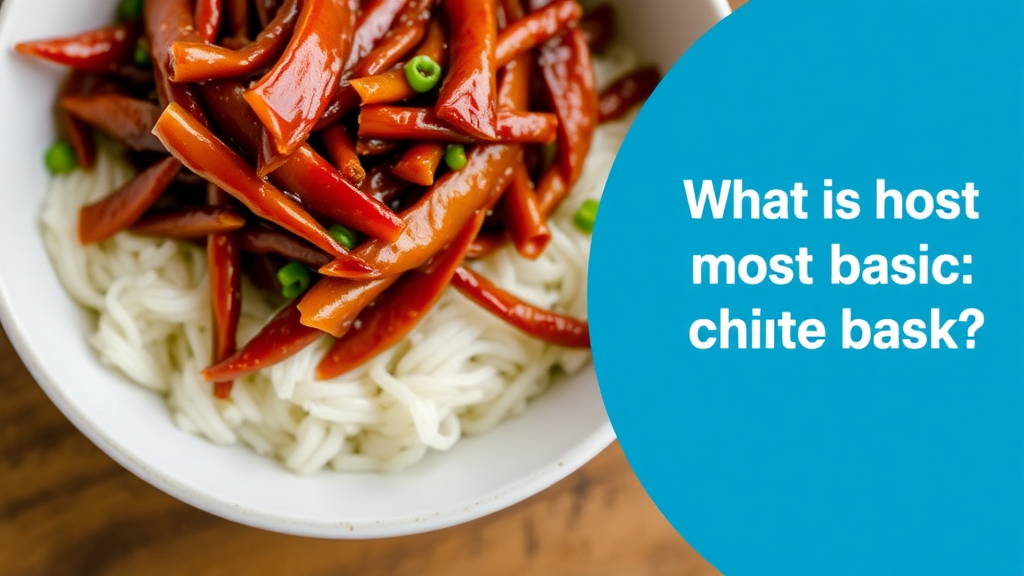


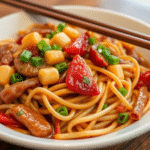
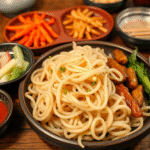
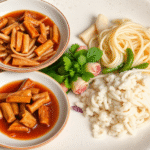
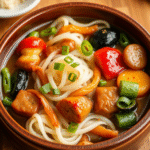
Leave a Reply